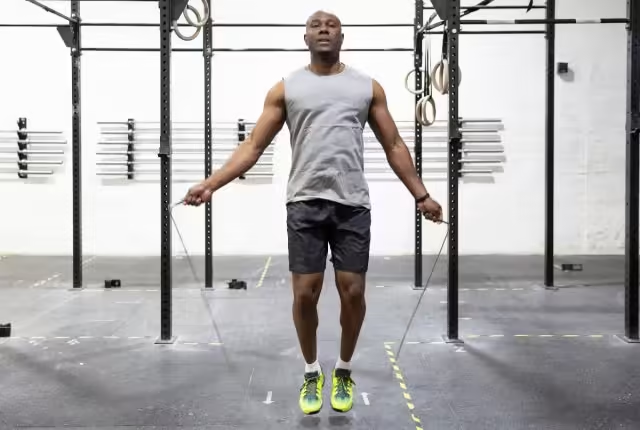Developing good and bad exercise habits is not uncommon as you progress on your fitness journey. It is essential to periodically reassess your routine to stay on course and avoid activities that may result in injuries. Personal trainer Kelly Najjar, NBC-HWC, from Fyt, highlights five detrimental exercise habits for individuals over 40. If you recognize any of these habits in your routine, it’s time to eliminate them immediately.
“Welcome to ‘Prime Time,’ the second half of your life,” says Najjar. “This is the time to invest in your health and wellness so that your retirement is full of [everything] you want to do. Pain and its limitations prevent many from enjoying an active retirement. Now that you are over 40, it is important to care for your body by avoiding these exercise habits. As you age, maintaining your strength, balance, and endurance safely will keep you doing the things you love.”
Now, let’s explore the five exercise habits that can wreck your body after 40.
Plyometrics
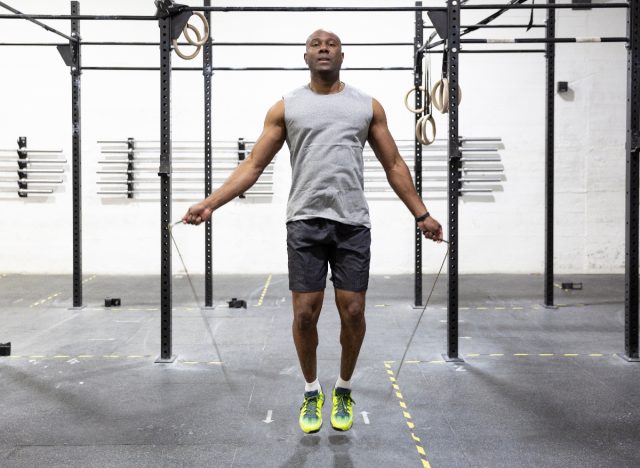
Plyometrics involves explosive movements that boost muscle power. While that’s all well and good, this form of training can also be rough on joints, such as the spine.
Najjar suggests, “To preserve the health of your knees, hips, and spine, it is better to enjoy exercises with a lower impact. Some options include strength training, walking or jogging, or yoga.”
Sprints

High-intensity interval training (HIIT) may be a popular form of training, but the quicker your movements, the more you risk injury. “Combined with a longer healing time, after 40, it is better to slow down and avoid exercises that require a sprint,” Najjar explains.
Instead, opt for an elliptical workout or a slow jog. Both forms of exercise are less likely to result in an injury.
Crunches and traditional sit-ups
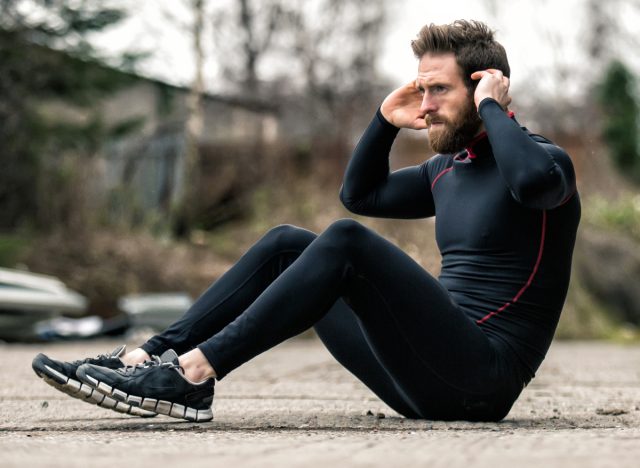
Growing older comes with many natural changes in your body. For instance, your spine can become more susceptible to injury, and you need to adapt your exercise regimen with that in mind.
“Traditional core exercises like crunches and sit-ups put unnecessary pressure on the neck and lower back,” Najjar explains. “Try a glute bridge or a bird-dog to help keep a strong core without putting your spine at risk.”
Ignoring your balance
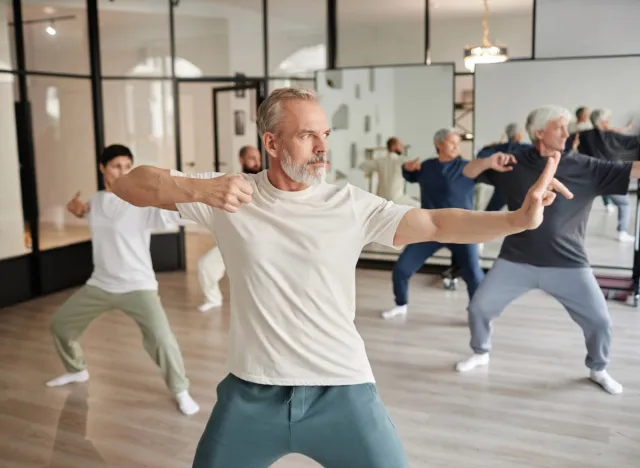
Falling becomes more common as you grow into your older years. That’s why it’s crucial to get ahead of the game and work on your balance earlier in life as often as you can.
“If you have good balance and want to maintain it into your Prime Time, perform standing three-way kicks with weight (either a band or tower with a leg attachment),” Najjar says. “If your balance isn’t what it used to be, you can ask your doctor for a few physical therapy sessions and learn the best exercises for you.”
Forgetting to stretch
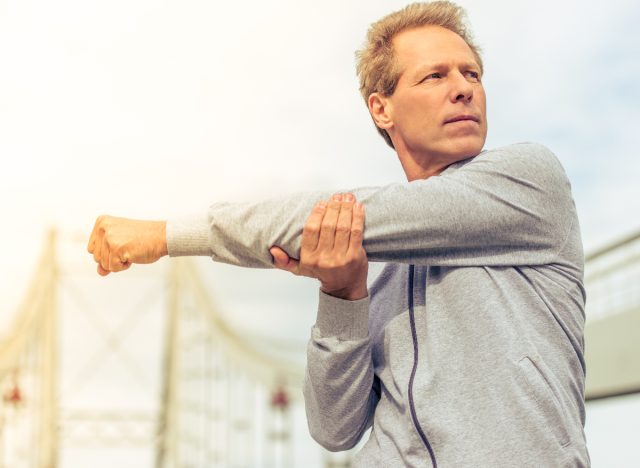
Don’t sleep on stretching! It’s easy to skip this critical part of the cool-down process, but make it a habit to stretch after wrapping up your workout.
“After finishing a good workout, it is easy to towel off and head for the locker room,” Najjar points out. “While that might be fine in your younger years, it can cause big problems in Prime Time. Tight muscles pull on the joints they support, causing general aches and pains. Prolonged pressure on the joint can lead to osteoarthritis.”
Frequently Asked Questions (FAQs)
1. What are some common exercise habits that can be harmful to the body after 40?
Some common exercise habits that can be harmful to the body after the age of 40 include:
- Overtraining without enough rest
- Ignoring flexibility and mobility exercises
- Performing high-impact exercises without proper form
- Not adjusting your workout routine as you age
- Skipping warm-up and cool-down sessions
2. How does overtraining without enough rest impact the body after 40?
Overtraining without enough rest can lead to increased risk of injuries, fatigue, weakened immune system, and hormonal imbalances, especially after the age of 40. It is important to allow your body to recover properly in order to prevent these negative effects.
3. Why is it crucial to include flexibility and mobility exercises in your workout routine after 40?
Flexibility and mobility exercises help improve joint health, range of motion, and reduce the risk of injuries, all of which become increasingly important as we age. These exercises can also help counteract the effects of aging on the muscles and joints.
4. What are the potential risks of performing high-impact exercises without proper form after 40?
Performing high-impact exercises without proper form can increase the risk of joint pain, musculoskeletal injuries, and exacerbate existing conditions such as arthritis. It is crucial to focus on correct form and technique, especially when engaging in high-impact activities.
5. How should workout routines be adjusted as individuals age past 40?
As individuals age past 40, it is important to focus on activities that prioritize strength training, flexibility, balance, and overall functional fitness. It may also be beneficial to incorporate low-impact exercises, vary workout intensities, and listen to your body to prevent overexertion.
6. Why are warm-up and cool-down sessions especially important for individuals over 40?
Warm-up sessions help prepare the body for exercise by increasing blood flow to the muscles and improving joint flexibility, which can reduce the risk of injury, especially for those over 40. Cool-down sessions are essential for gradually bringing the heart rate down and aiding in muscle recovery post-workout.

